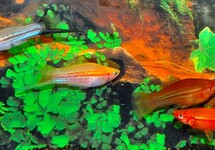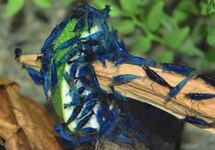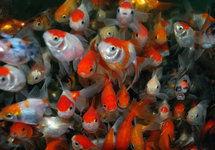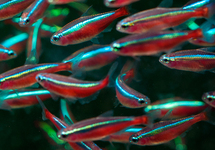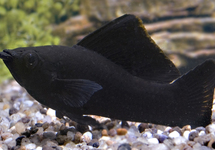It owes its name to one of its discoverers in 1866, John Lechmere Guppy. He sent some small fish to London where they were classified as Giradinus Guppyi. This was purely for the males, because in those days it was thought that the males and females were two different species. When they found out that it was the same type, the name was changed in Lesbistes Reticulata. In the meantime, the name changed many times until the final name Poecilia reticulata.
The guppy is an elegant and colorful fish, that is easy to grow and because of that, very popular in an aquarium. Apart from guppies in aquariums they were plotted against mosquitoes in natural exotic waters. For this reason the guppy is found far beyond the limits of its native waters. What that native area is, is not known. Traders and importers of guppies in 1900 were not very carefull to state the original sites were they came from. In the scientific literature, the only source regions mentioned are: northern Brazil, Guyana, Venezuela and the islands before its shores. The present distribution of the guppy is much larger as said. Overall, they are currently in areas with fresh to brackish waters with a temperature between 18 and 28 ° C. Of course we're not talking about the guppy as he usually appears on the market with all its bred forms. A close relative of the "wild" guppy is called Endler's guppy. It is still not clear whether this is a separate species, a subspecies or a local variant.












